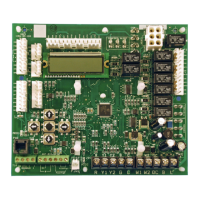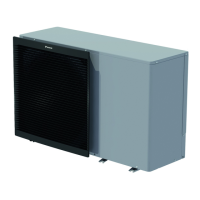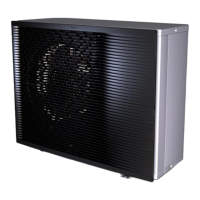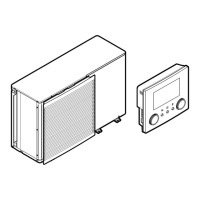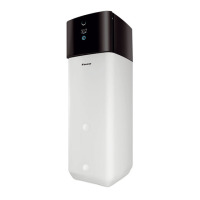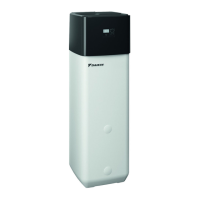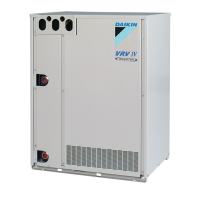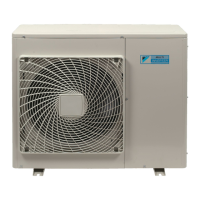www.DaikinApplied.com 43 IM 972-2 • MAVERICK I ROOFTOP SYSTEMS
Lubrication
IMPORTANT: DO NOT attempt to lubricate the bearings on
the blower motor or the induced draft blower motor. Addition of
lubricants can reduce the motor life and void the warranty.
The blower motor and induced draft blower motor are
prelubricated by the manufacturer and do not require further
attention.
A qualied installer, service agency or the gas supplier
must periodically clean the motors to prevent the possibility
of overheating due to an accumulation of dust and dirt on
the windings or on the motor exterior. And, as suggested
elsewhere in these instructions, the air lters should be kept
clean because dirty lters can restrict air ow and the motor
depends upon sucient air owing across and through it to
prevent overheating.
Cooling Section
DANGER
Power supply to unit must be disconnected before making eld connections.
To avoid electrical shock, personal injury or death, be sure to rigorously
adhere to eld wiring procedures regarding proper lockout and tagout of
components.
DANGER
Label all wires prior to disconnection when servicing the unit. Wiring errors
can cause improper and dangerous operation resulting in re, electrical
shock, property damage, severe personal injury or death.
It is recommended that at the beginning of each cooling
season a qualied installer or service agency inspect and clean
the cooling section of this unit. The following areas should be
addressed: evaporator coil. condenser coil, condenser fan
motor and venturi area.
To Inspect the Evaporator Coil
1. Open the control/lter access panel and remove
lters. Also, remove blower access panel. In downow
applications remove the horizontal return to gain access.
2. Shine a ashlight on the evaporator coil (both sides) and
inspect for accumulation of lint, insulation, etc.
3. If coil requires cleaning, follow the steps shown below.
Cleaning Evaporator Coil
1. The coil should be cleaned when it is dry. If the coil
is coated with dirt or lint, vacuum it with a soft brush
attachment. Be careful not to bend the coil ns.
2. If the coil is coated with oil or grease, clean it with a mild
detergent-and-water solution. Rinse the coil thoroughly
with water.
IMPORTANT: Do not use excessive water pressure.
Excessive water pressure can bend the ns and tubing
of the coil and lead to inadequate unit performance. Be
careful not to splash water excessively into unit.
3. Inspect the drain pan and condensate drain at the same
time the evaporator coil is checked. Clean the drain
pan by ushing with water and removing any matters of
obstructions which may be present.
4. Go to next section for cleaning the condenser coil.
Cleaning Condenser Coil, Condenser Fan, Circulation Air
Blower and Venturi
1. Remove the compressor access panel and/or
compressor access louver panel. Disconnect the wires
to the condenser fan motor in the control box (see wiring
diagram).
2. The coil should be cleaned when it is dry. If the coil
is coated with dirt or lint, vacuum it with a soft brush
attachment. Be careful not to bend the coil ns.
3. If the coil is coated with oil or grease, clean it with a mild
detergent-and-water solution. Rinse the coil thoroughly
with water.
IMPORTANT: Do not use excessive water pressure.
Excessive water pressure can bend the ns and tubing
of the coil and lead to inadequate unit performance. Be
careful not to splash water excessively into unit.
4. The venturi should also be inspected for items of
obstruction such as collections of grass, dirt or spider
webs. Remove any that are present.
5. Inspect the circulating air blower wheel and motor for
accumulation of lint, dirt or other obstruction and clean
it necessary. Inspect the blower motor mounts and the
blower housing for loose mounts or other damage.
Repair or replace if necessary.
Re-Assembly
1. Reconnect fan motor wires per the wiring diagram
attached to the back of the cover.
2. Replace the control box cover.
3. Close the lter/control access panel and replace the
blower/evaporator coil access panels.
4. Restore electrical power to the unit and check for proper
operation, especially the condenser fan motor.

